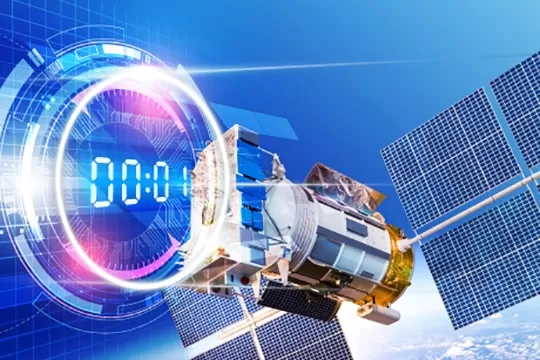Guide to GPS/GNSS Clock Synchronization


David Sohn
Electronic clocks control critical functions in many applications. However, clocks are often designed for low cost rather than keeping accurate time.
Even fairly accurate computer clocks are likely to vary due to manufacturing issues, changes in temperature, electric and magnetic interference, the age of the quartz crystal, or even system load.
Additionally, even the smallest errors in keeping time can add up significantly over a long period.
Clock Drift
Consider two clocks that are synchronized at the beginning of the year. Over time, one consistently requires an extra 0.04 milliseconds to increment itself by a second.
By the end of a year, the two clocks will differ by more than 20 minutes. If a fairly decent clock is off by just 10 parts per million (ppm), it will gain or lose almost a second a day. What is more, server clocks often drift by 200 ppm-about 50 times worse, and unacceptable to most network architects.
Atomic Clocks
Clocks locked to atomic standards are much more stable timekeepers. Rubidium, Cesium and Hydrogen Maser clocks are very accurate. Of the three, Rubidium clocks often provide the best combination of cost, size and overall performance, and are often a requirement for highly reliable master clock systems. However, atomic clocks themselves do not guarantee traceability and synchronization with other clocks. That is where GPS/GNSS comes in.
Synchronization to GNSS
GPS/GNSS satellites include three or four atomic clocks that are monitored and controlled so that they are highly synchronized and traceable to national and international standards (known as Coordinated Universal Time, or UTC).
For time synchronization, the GNSS signal is received, processed by a local master clock, time server or primary reference, and passed on to downstream devices, systems or networks so that their local clocks are also synchronized to UTC. Typical accuracies range from better than 1 microsecond to a few milliseconds depending on the synchronization protocol.
It is the process of synchronization to GNSS that can provide atomic clock accuracy without the need for a local atomic clock. Still, local atomic clocks are sometimes desired as a long-term back-up solution in the event of a GNSS signal loss such as a weather-related outage, signal interference or other scenarios such jamming or spoofing.
In any event, GNSS clock synchronization eliminates the need for manual clock setting (an error-prone process) to establish traceability to national and international standards. This allows various events to be correlated even if they are time-stamped by different clocks. The benefits are numerous and include:
- Legally traceable/validated timestamps
- Regulatory compliance
- Secure networking
- Operational efficiency
Rackmount Appliances, Plug-in Cards, OEM Boards and Modules for GPS/GNSS Clock Synchronization
Orolia integrates GNSS receivers into various timing platforms with internal oscillators, which provides the ability to synchronize to other references if GNSS is not available. These devices can then generate precision time and frequency signals as required by all devices. Orolia’s solutions are compatible with major GNSS systems, including GPS, Galileo, GLONASS, and Beidou and regional systems such as Japan’s QZSS.
Testing Time Transfer via GPS/GNSS
Orolia’s GNSS simulators can be used to test the integration of GNSS receivers into synchronization systems. These simulators offer a variety of timing functions and calibrated performance (to better than 1 nanosecond) between a physical 1PPS signal and a generated GNSS on-time point. Using a simulator is an excellent way to validate the accuracy of your time synchronization system and the resilience of your system in degraded situations.
Whatever clock choice you make, we strongly recommend that you not rely on the internet to receive time. Not only does it create a significant security risk by going outside your firewall, time derived from the internet simply isn’t accurate. For more information, please download our tech brief: The Traceability of Time Synchronization: Why Internet Time Isn’t Good Enough.
